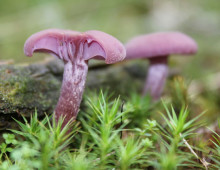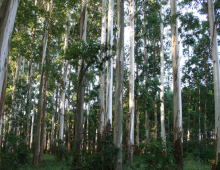Understanding how plants and fungi developed symbiotic relationships. With apologies to the poet John Donne, and based on recent work from the U.S. Department of Energy Joint Genome Institute (DOE JGI), a DOE Office of Science user facility, it can be said that no plant is an island, entire of itself. Unseen by the human…
Exploring Uncultivable Microbes at AAAS
SESSION TITLE: Novel Technologies for Exploring the Uncultivated Microbial Majority WHEN: 1:00pm on Friday, February 13, 2015 WHERE: Room LL20C (San Jose Convention Center) Susannah Tringe and Tanja Woyke, the respective heads of our Metagenome and Microbial Programs, have organized a session at this year’s American Association for the Advancement of Science (AAAS) Meeting, which…
Complete Genomes from Single Cells Still Elusive
DOE JGI researchers describe the current challenges in single-cell genomics. The Science: DOE JGI researchers review the status of single-cell genomics, and how close scientists are to being able to reconstruct an individual cell’s genome. The Impact: As an alternative method of studying microbial communities, single-cell genomics allows researchers to link function to phylogeny without…
Enhancing Microbial Pathways for Biofuel Production
DOE JGI, JBEI researchers collaborate on improving terpene production in E. coli. Science: Researchers from the DOE JGI and the Joint Bioenergy Institute identified genes in an E. coli microbial metabolism pathway that could improve the production of terpenes. The Impact: Terpenes are high-energy compounds produced in microbes and plants that could be used for…
CAMI Hosts Community Challenge for Assessing Metagenomes
Current CAMI Schedule for Participants: March 27, 2015 “Challenge Part I” opens: Read data sets posted for assembly and read based profiling/binning May 8, 2015 Deadline for “Challenge Part I,” Assemblies May 9, 2015 “Challenge Part II” opens: Gold standard assemblies posted for contig-based profiling/binning May 27-29, 2015 1st CAMI Evaluation Meeting. Details: http://cami-challenge.org/evaluation_meeting June 19, 2015 Deadline…
2014 Food Drive Collection Tops 1,700 lbs
The annual JGI Holiday Food Drive of 2014 brought nearly a ton of food to the the Food Bank of Contra Costa and Solano. Over half of the total came from the family of software developer Bobby Otillar, who pledged to match the amount of food donated by fellow JGIers pound-for-pound for the third year in a row. This…
How a White Rot Tackles Freshly-Cut Wood
Unlike many other white rot fungi, P. gigantea prefers to colonize freshly-harvested wood. The Science: Researchers sequenced and analyzed the white rot fungus Phlebiopsis gigantea, which can break down fresh-cut conifer sapwood. They also sequenced and analyzed the set of P. gigantea’s secreted proteins (secretome) and the set of all of its RNA molecules (transcriptome)….
Eucalyptus grandis Genome 2.0—Community Resource
Genetic maps improve the reference genome assembly of the candidate bioenergy feedstock The Science: A team of French researchers developed an array that allowed them to produce high-resolution genetic maps of two eucalyptus species that they then compared to the reference genome of eucalyptus produced by a team including DOE JGI researchers. The Impact: The…
NCBI Genomes Reprocessed using IMG’s Annotation Pipelines and Distributed via JGI’s Genome Portals
The Integrated Microbial Genomes (IMG) system provides tools for analyzing the structural and functional annotations of metagenomes and single genomes in a comparative context. At the core of the IMG system is a data warehouse that contains genome and metagenome datasets (sets of genome sequence fragments from microbial communities) sequenced at the DOE Joint Genome…
Noteworthy DOE JGI papers in Nature Methods
Three publications are featured in the Special 10th Anniversary issue. The Science: To mark its 10th anniversary, the journal Nature Methods released a Special Issue highlighting impactful articles. Among these noteworthy articles are three from DOE JGI researchers. The Impact: Microbial Sequencing is one of the areas of methods development highlighted by the journal, and…








